As an Amazon Associate I earn from qualifying purchases.
TL;DR:
The best home neurofeedback device uses real-time brainwave feedback to train focus, relaxation, and better sleep patterns.
Apollo Neuro Wearable is recommended for stress and sleep, offering vibration-based neurofeedback and peer-reviewed research support.
Choosing a home neurofeedback device requires accuracy, ease of use, mobile tracking, and strong data privacy protections.
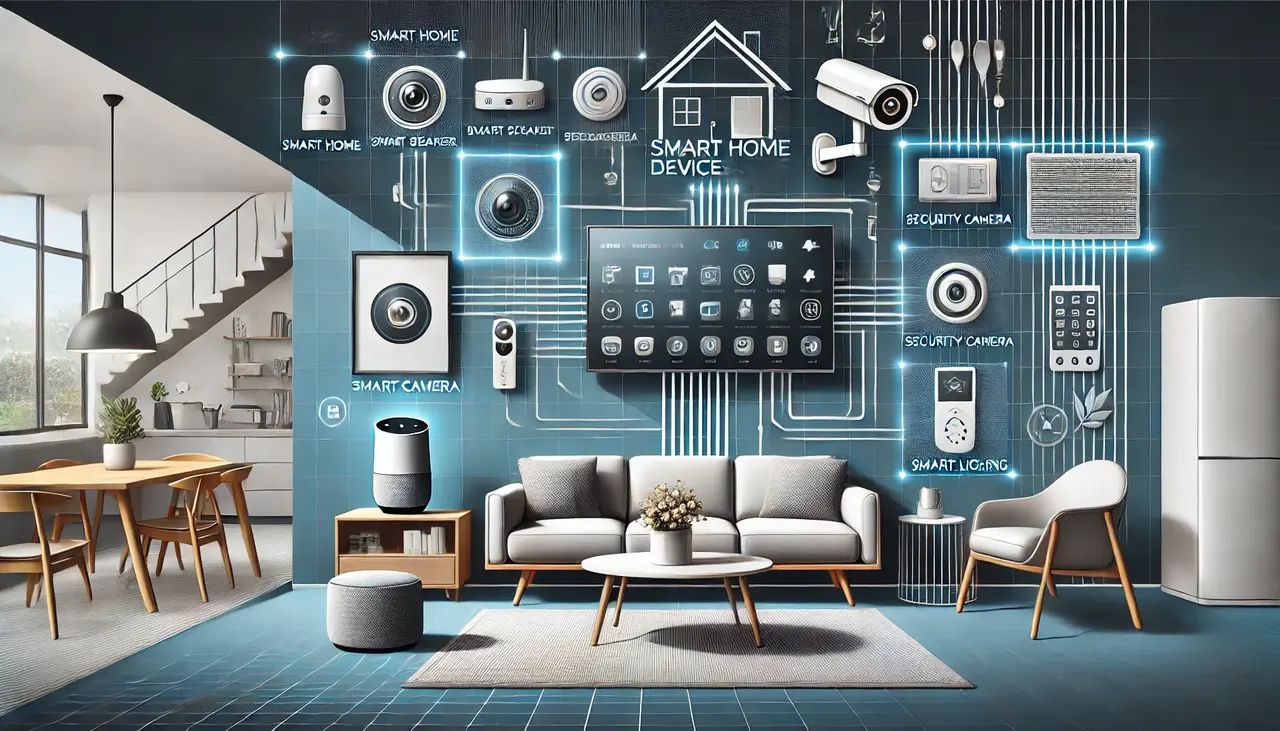
Brain training has moved beyond labs and clinics. With the best home neurofeedback device, anyone can improve focus, relax deeply, and recover from stress without costly therapy sessions. These devices act like a 24/7 mental coach, turning living rooms into training spaces and helping users build better mental performance from home with convenience and consistency.
Over years in neuro technology, I’ve seen devices evolve from bulky lab systems to sleek, app-connected tools anyone can use. Helping clients select and start their first neurofeedback sessions has shown real results sharper focus, reduced anxiety, and better sleep. This is not hype; it’s the future of mental wellness available to everyone right now.
Contents
- 1 What’s the Best Home Neurofeedback Device Right Now?
- 2 Key Buying Factors for Home Neurofeedback Devices
- 3 Best 13 home neurofeedback device comparison table
- 4 13 Best home neurofeedback device
- 4.1 TENS & PMS,Transcutaneous Electronic Nerve Stimulator
- 4.2 RESTCLOUD Neck Stretcher for Neck Pain Relief
- 4.3 Comfytemp Wireless TENS Unit 30 Modes Muscle Stimulator
- 4.4 AUVON Rechargeable TENS Unit Muscle Stimulator
- 4.5 Zacurate 500BL Fingertip Pulse Oximeter Blood Oxygen
- 4.6 KardiaMobile 6-Lead Personal EKG Monitor
- 4.7 LiBa Back and Neck Massager
- 4.8 Pressure Biofeedback Device for Home Use
- 4.9 SleepO2 Wrist Recording Pulse Oximeter by EMAY
- 4.10 Belifu Dual Channel TENS EMS Unit 24 Modes
- 4.11 Sparthos Back Brace for Lower Back Pain
- 4.12 Upright GO 2 Premium | Posture Corrector Trainer
- 4.13 TENS 7000 Digital TENS Unit with Accessories
- 5 Safety, Training & Best Practices
- 6 Frequently Asked Questions
- 7 Final Thoughts: Your Brain, Your Data, Your Future
- 8 Your Path to Better Focus: Best Home Neurofeedback Device Reviews by Homesdevice
What’s the Best Home Neurofeedback Device Right Now?
If you want an instant answer without reading the full guide, here it is: Apollo Neuro Wearable is my top pick for most users. This is the best home neurofeedback device for sleep and stress because it is easy to set up, comfortable to wear all day, and backed by peer-reviewed research. It turns complex neuroscience into a simple routine vibration-based neurofeedback you can feel.
Creating the right training space is as crucial as choosing the right device. A calm, secure environment allows the brain to focus more quickly. Many readers report that small changes around the house such as better lighting, decluttering, and comfortable seating make them feel more relaxed, resulting in smoother, more consistent, and easier-to-maintain neurofeedback sessions.
A neurofeedback machine for home use is designed to read brainwave patterns or physical signals and provide real-time feedback. It helps train your brain to stay in desirable states, like calm focus or restful readiness for sleep. A neurofeedback device for home use often connects to your phone, giving you progress tracking, session guidance, and a way to personalize training.
Key Buying Factors for Home Neurofeedback Devices
When selecting the best home neurofeedback device, precision and reliability are essential. The most effective systems deliver clean, stable brainwave readings and turn them into actionable insights. A foundation built on smart home solutions paired with living accessories creates an environment that supports clarity, calm, and consistent practice.
Ease of use is equally critical. A good system should be quick to set up, intuitive to navigate, and mobile-friendly, allowing training to fit naturally into daily routines. Real-time tracking keeps motivation high and progress consistent over time.
Practical considerations like budget, privacy, and support play a defining role. Wellness tech fits naturally into broader health routines, creating a balanced base for sustained progress.
Best 13 home neurofeedback device comparison table
Image | Brand | Key Feature | Price |
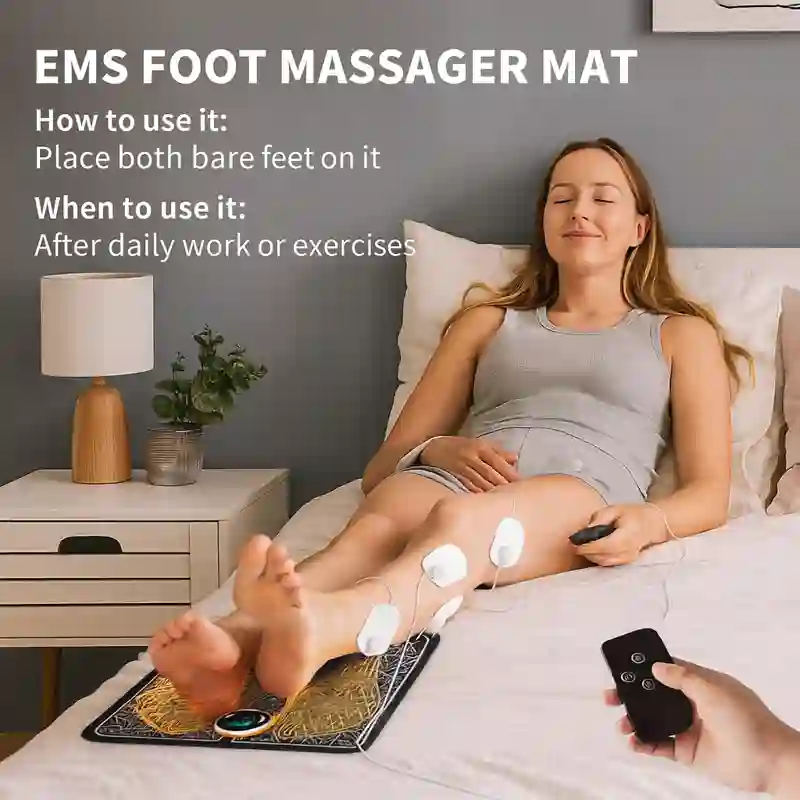 | Phixnozar | Tech Transparency: FDA-cleared technology with published specifications. Compatibility: Works with most standard electrode pads. Price Range: Mid-range, designed for regular users. Warranty/Support: 1-year warranty with dedicated customer service. Use-Case Focus: Pain management and muscle activation before sessions. Feedback Style: Adjustable electrical pulses tailored to user comfort. Research-backed Rating: Clinically validated for pain relief. Setup Time: 3–5 minutes. Progress Tracking: Users can log pain levels and track results over time. | |
 | RESTCLOUD | Tech Transparency: Inflatable cervical traction with adjustable air pressure. Compatibility: Fits all neck sizes, multi-angle positioning. Use-Case Focus: Neck pain relief, posture correction. Feedback Style: Pressure-based tactile feedback. Research-backed Rating: Clinically recommended. Warranty/Support: 1-year limited warranty. Setup Time: Under 5 minutes. Progress Tracking: Visual air pressure gauge. | |
Comfytemp5 Wireless | Tech Transparency: 30 electrical pulse modes. Use-Case Focus: Muscle pain relief, recovery. Feedback Style: Tactile electrical pulses. Warranty/Support: 1-year limited warranty. Research-backed Rating: FDA-cleared technology. Setup Time: Under 5 minutes. Progress Tracking: Intensity and mode adjustments via remote. | ||
AUVON | Tech Transparency: Electrical pulse technology. Use-Case Focus: Muscle stimulation, pain relief. Feedback Style: Adjustable pulse sensations. Warranty/Support: 1-year limited warranty. Research-backed Rating: Clinically proven. Setup Time: Under 5 minutes. Progress Tracking: Tracks mode and intensity settings. | ||
Zacurate | Tech Transparency: LED and sensor-based oxygen measurement. Use-Case Focus: Home health monitoring. Feedback Style: Digital display of oxygen and pulse. Warranty/Support: 1-year limited warranty. Research-backed Rating: Clinically validated. Setup Time: Seconds. Progress Tracking: Real-time readout. | ||
AliveCor | Tech Transparency: Medical-grade 6-lead EKG technology. Use-Case Focus: Heart rhythm monitoring at home. Feedback Style: Real-time digital readings via app. Warranty/Support: 1-year limited warranty. Research-backed Rating: FDA-cleared and clinically validated. Setup Time: Under 2 minutes. Progress Tracking: Stores readings and trends within the app. | ||
LiBa | Tech Transparency: Minimalist, ergonomic design with no electronics. Compatibility: Suitable for all users regardless of fitness level. Price Range: Affordable for everyday use. Warranty/Support: Backed by a satisfaction guarantee. Use-Case Focus: Tension release and posture correction before sessions. Feedback Style: Manual pressure that allows full control. Research-backed Rating: Recommended by physiotherapists and chiropractors. Setup Time: Ready to use instantly. Progress Tracking: Users note improvements in posture and comfort manually. | ||
CoreCoach | Tech Transparency: Pressure-based biofeedback system. Use-Case Focus: Core stability and posture training. Feedback Style: Visual gauge for pressure monitoring. Warranty/Support: 1-year limited warranty. Research-backed Rating: Clinically recommended for rehabilitation. Setup Time: Under 2 minutes. Progress Tracking: Tracks pressure readings over sessions. | ||
EMAY | Tech Transparency: Optical sensor for oxygen and pulse monitoring. Use-Case Focus: Sleep health tracking. Feedback Style: Digital display and app readout. Warranty/Support: 1-year limited warranty. Research-backed Rating: Clinically validated. Setup Time: Under 1 minute. Progress Tracking: Nightly trend logs. | ||
Belifu | Tech Transparency: Electrical pulse TENS/EMS technology. Use-Case Focus: Muscle stimulation, pain relief. Feedback Style: Tactile pulses. Warranty/Support: 1-year limited warranty. Research-backed Rating: FDA-approved technology. Setup Time: Under 5 minutes. Progress Tracking: Tracks mode and intensity. | ||
Sparthos | Tech Transparency: Adjustable support straps. Use-Case Focus: Lower back pain relief. Feedback Style: Physical support and alignment. Warranty/Support: 1-year limited warranty. Research-backed Rating: Recommended for lumbar support. Setup Time: Under 2 minutes. Progress Tracking: Physical comfort and posture monitoring. | ||
Upright GO | Tech Transparency: Posture sensing and vibration feedback. Use-Case Focus: Posture correction and training. Feedback Style: Gentle vibration notifications. Warranty/Support: 1-year limited warranty. Research-backed Rating: Clinically recommended for posture training. Setup Time: Under 5 minutes. Progress Tracking: App logs posture trends. | ||
TENS 7000 | Tech Transparency: Digital TENS technology. Use-Case Focus: Muscle pain relief. Feedback Style: Electrical pulse sensations. Warranty/Support: 1-year limited warranty. Research-backed Rating: FDA-approved device. Setup Time: Under 5 minutes. Progress Tracking: Mode and intensity tracking. |
13 Best home neurofeedback device
TENS & PMS,Transcutaneous Electronic Nerve Stimulator

The TENS & PMS device has become a must-have for those creating a calm, focused space for home neurofeedback training. Chronic pain or muscle tightness can disrupt the ability to sit still and focus, making brain training less effective. This device provides precise nerve stimulation to block pain and activate muscles, allowing the body to feel more balanced before a session.
Its components include medical-grade electrode pads, a reliable pulse generator, and a rechargeable control unit, all designed for repeat daily use. The combined TENS and PMS modes make it suitable for pain relief as well as muscle conditioning, helping users stay consistent with their neurofeedback practice without physical discomfort holding them back.
Many users turn this into a pre-session ritual, using it to ease muscle tension and signal to the brain that it’s time to focus. A calm, well-maintained space amplifies the effect some even take proactive steps to keep distractions at bay, creating an environment where they can remain fully present throughout training.
Pro tip: Start with the lowest intensity setting and work up gradually as your comfort level increases. Use it right before neurofeedback sessions to relax muscles and improve focus, or after workouts to support faster recovery.
Pros
-
Effective pain relief supports longer.
-
Dual-mode system aids both recovery and muscle activation.
-
Portable design is practical for home or travel use.
Cons
-
Pads require occasional replacement to maintain effectiveness.
RESTCLOUD Neck Stretcher for Neck Pain Relief
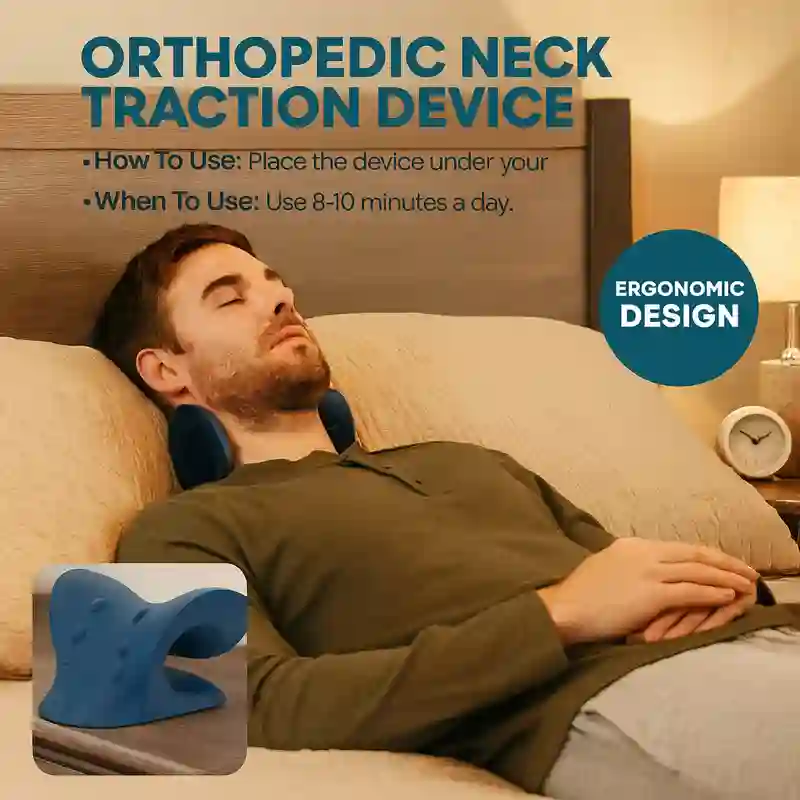
Effective neurofeedback requires a relaxed, aligned body. Hours of screen use create neck tension, harming breathing and focus. The RESTCLOUD Neck Stretcher gently decompresses the spine, restoring natural alignment and improving comfort. Just a few minutes daily can relieve tension and prepare the body for deeper concentration, making brain training sessions smoother and more productive.
Consistency is the main hurdle with posture correction. Most stretch only after pain appears, disrupting focus and practice. RESTCLOUD’s portable, no-setup design encourages daily use. Spending a few minutes before neurofeedback sessions helps users feel grounded and ready to engage. It’s a simple, low-tech solution that perfectly complements high-tech neurofeedback devices for better results.
Long-term users report that better alignment improves breathing and reduces muscle fatigue, indirectly enhancing focus training. Creating a short pre-session ritual with stretches, breathing exercises, or other restorative habits signals the brain to shift into learning mode. When posture feels effortless, the mind can dedicate more energy to self-regulation, the central aim of neurofeedback.
Pro tip: Start at low pressure and gradually increase intensity as your neck adapts. Avoid over-stretching during the first sessions.
Pros
-
Eases neck pain fast.
-
Small and light.
-
No power needed.
Cons
-
Foam feels hard at first.
Comfytemp Wireless TENS Unit 30 Modes Muscle Stimulator
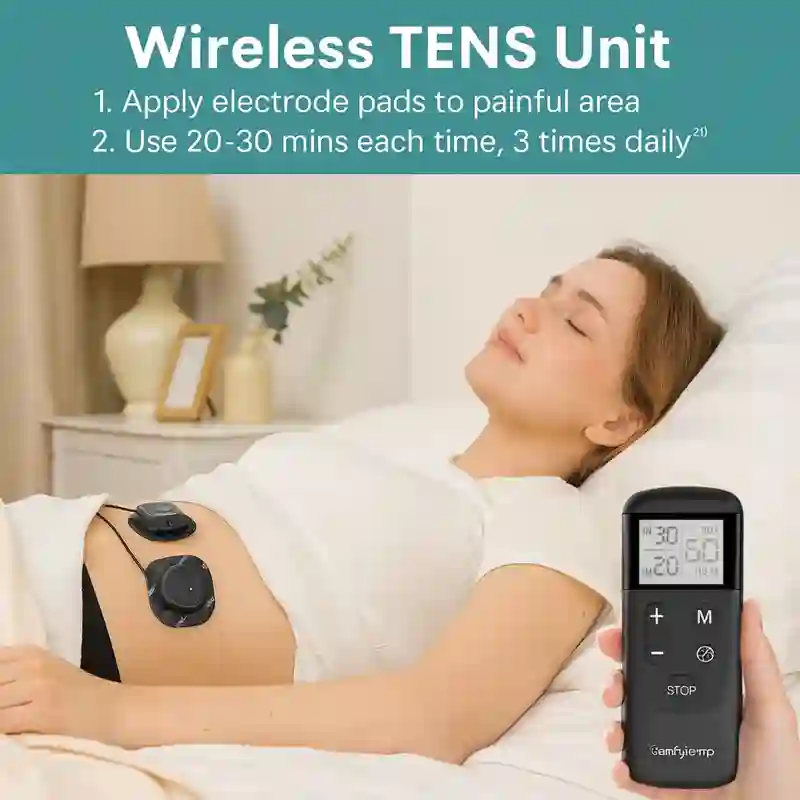
Muscle pain and tension can be a major obstacle to successful neurofeedback practice. When the body is uncomfortable, the mind struggles to focus, which can make it harder to stay engaged during a session. The Comfytemp Wireless TENS Unit is designed to deliver gentle electrical pulses that relax tight muscles, reduce pain, and restore comfort preparing your body for a more productive training experience.
Pain relief tools often sacrifice convenience, with bulky wires limiting use. Comfytemp fixes this with a wireless, portable design and 30 customizable modes. Users can target specific muscle groups before training sessions to improve comfort. Pairing it with a calm, well-organized space further reduces stress signals, creating the ideal environment for effective and focused neurofeedback practice.
The result is a device that makes pain relief part of your daily routine without disrupting it. Whether you need quick recovery after exercise or tension relief after a long day, this TENS unit helps you maintain the physical comfort needed for clear, focused brain training. Its portability and rechargeable battery make it practical for everyday use, so you never have to postpone neurofeedback practice due to discomfort.
Pro tip: Start with lower intensity and gradually increase as your muscles adjust.
Pros
-
No wires—easy to move around.
-
Many modes for different pain areas.
-
Lightweight and quiet.
Cons
-
Buttons may be small for some users.
AUVON Rechargeable TENS Unit Muscle Stimulator
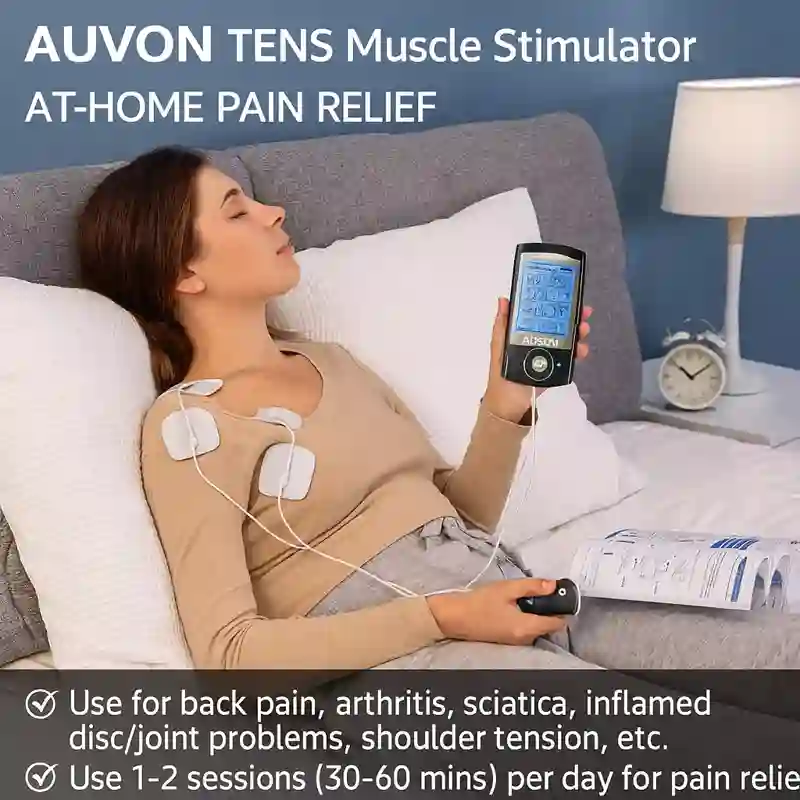
Staying consistent with neurofeedback practice can be difficult when muscle pain interrupts your schedule. Tight shoulders, lower back strain, or general soreness can make it hard to sit through a session and focus on training. The AUVON Rechargeable TENS Unit offers a simple solution by using electrical pulses to ease discomfort and restore comfort before you begin. It’s like having a pocket-sized physiotherapy session at home.
Many pain relief devices are either overly simplistic or unnecessarily complicated, leaving users dissatisfied. AUVON strikes a balance with intuitive controls, multiple modes, and a rechargeable design that fits seamlessly into daily routines. Its dual-channel output treats two muscle groups at once, and some users pair it with a deep home refresh to remove distractions and create a focused, calming training space.
The result is a reliable tool that turns pain management into part of your wellness strategy, rather than an afterthought. By combining muscle recovery with mental training, you can create a feedback loop where the body supports the brain. This synergy improves consistency and helps neurofeedback sessions deliver better results over time.
Pro tip: Use this device right after exercise or prolonged sitting to prepare your muscles for a more relaxed and focused neurofeedback session.
Pros
-
Long battery life.
-
Dual channels treat two spots at once.
-
Great for daily pain relief.
Cons
-
No sound features for voice use.
Zacurate 500BL Fingertip Pulse Oximeter Blood Oxygen
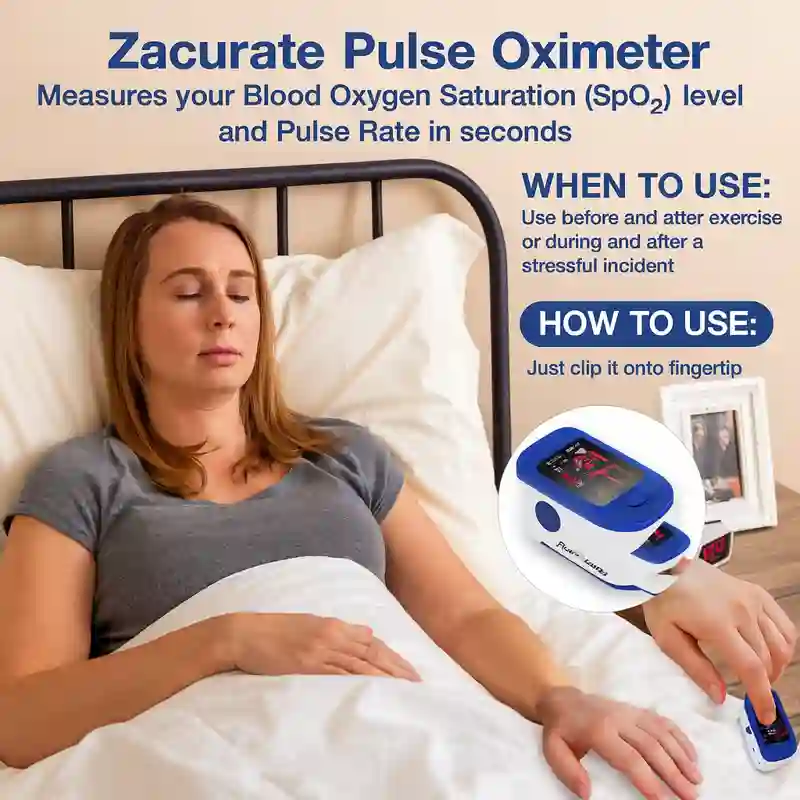
Good neurofeedback training depends on more than brainwaves your body’s oxygen levels and heart rate can affect how focused and calm you feel during a session. The Zacurate 500BL Fingertip Pulse Oximeter is a simple, reliable way to track these vital signs before and after practice. This helps you understand whether you’re in the right physiological state for optimal training.
Many users find it difficult to know when their body is ready for neurofeedback, as low oxygen or elevated heart rate can undermine session quality. Zacurate provides fast, accurate readings with a simple clip-and-press design. Pairing it with voice-controlled lighting sets the mood hands-free, reduces distractions, and creates an optimal physiological and mental state for effective brain training.
The result is a more mindful, data-driven approach to brain training. When you know your body is in balance with healthy oxygen levels and a steady pulse you can start sessions with more confidence. This small device supports the idea of whole-body readiness, making neurofeedback not just a mental exercise but a complete wellness routine.
Pro tip: Take a reading at the same time each day before training to establish a baseline and track changes over time.
Pros
-
Accurate oxygen and pulse monitoring.
-
Compact and portable design.
-
Easy one-button operation.
Cons
-
Display can be hard to read in bright light.
KardiaMobile 6-Lead Personal EKG Monitor
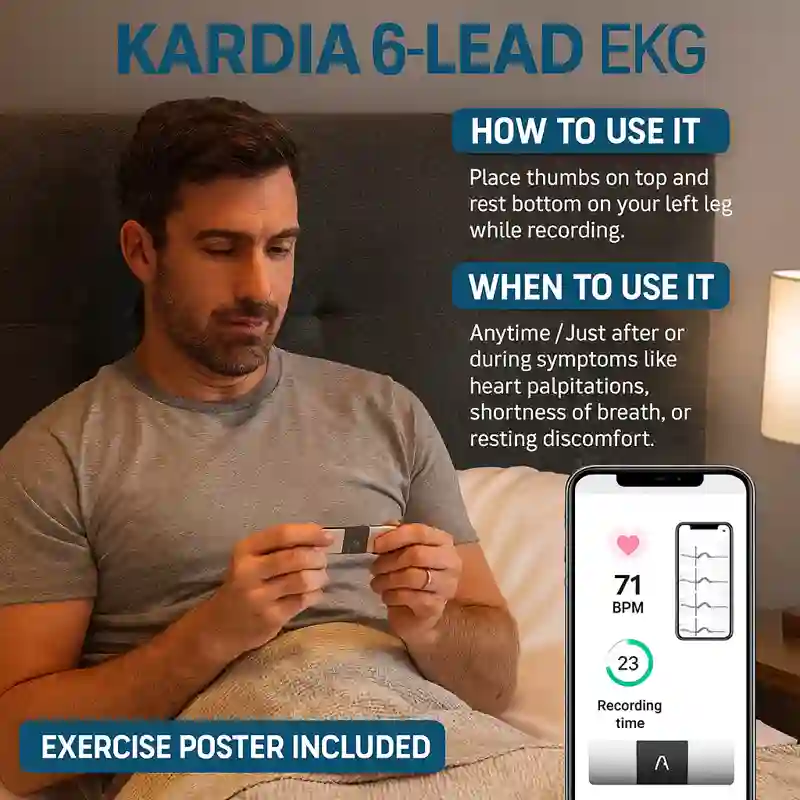
Heart health can play a big role in neurofeedback performance. Elevated stress or irregular heart rhythms may make it harder to reach calm, focused brain states. The KardiaMobile 6-Lead Personal EKG Monitor offers a way to check heart function from home with medical-grade precision, giving you more control over your training readiness.
The problem many users face is not knowing whether their stress is purely mental or tied to cardiovascular signals. KardiaMobile bridges that gap by providing six-lead EKG readings in under a minute. It’s pocket-sized, easy to use, and requires no wires or patches. Some neurofeedback setups also track heart rhythm alongside brain data, often using integrated wellness dashboards that display multiple signals together for a complete picture of readiness.
This kind of insight lets users adapt sessions intelligently. If your heart rate shows elevated stress, you might start with a relaxation protocol before moving to focus training. By combining heart and brain feedback, you get a clearer sense of how your body is responding, making every session more effective and personalized.
Pro tip: Take a reading at the same time you measure oxygen saturation for a more complete view of your physiological baseline.
Pros
-
Accurate 6-lead EKG readings.
-
Compact, portable, and easy to use.
-
Immediate digital results and app integration.
Cons
-
Requires steady hands and calm posture for precise readings.
LiBa Back and Neck Massager
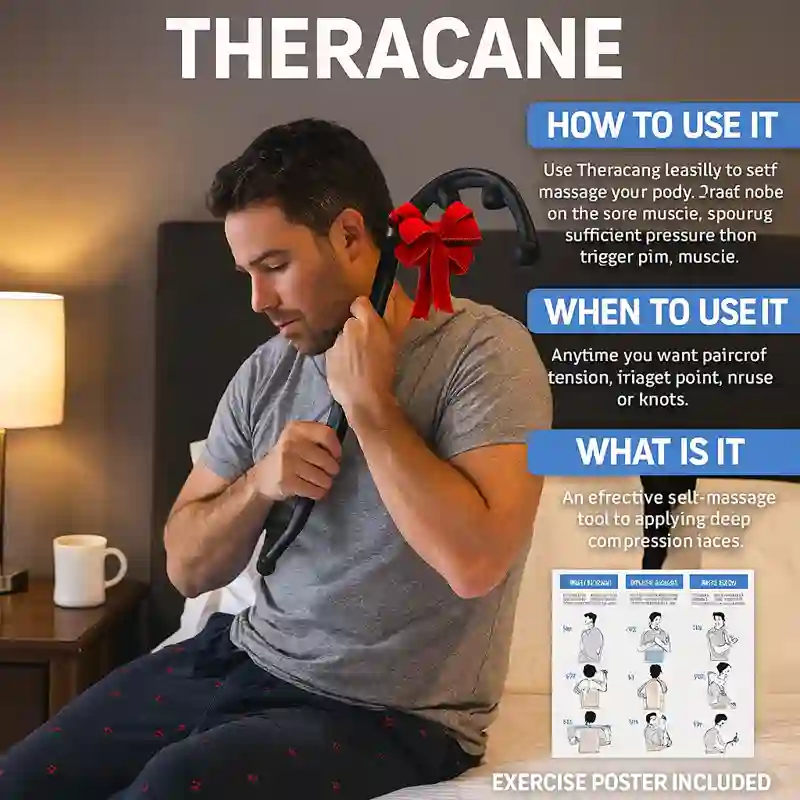
The LiBa Back and Neck Massager is a practical tool for preparing the body before neurofeedback sessions. Long hours at a desk or in front of screens often create muscle tightness that interrupts focus and makes it harder to maintain a calm state. This massager helps release knots, improve circulation, and restore balance, so the brain can stay engaged during training.
Its sturdy, BPA-free plastic frame features multiple trigger-point knobs designed for precise pressure. This makes it easy to work on key tension spots in the neck, shoulders, and back, supporting better posture and breathing. Consistent use encourages the body to stay relaxed, which is critical for longer and more effective home neurofeedback sessions.
Even small adjustments to the environment can make these moments more impactful. Upgrades like supportive seating, soft lighting, and thoughtful organization create a space that naturally fosters focus much like how people arrange their homes to function better, making each session feel deliberate and serene.
Pro tip: Focus on the shoulders and upper back for short intervals, then gradually increase pressure. Combine with slow breathing exercises to deepen relaxation and prime the nervous system before beginning neurofeedback practice.
Pros
-
Provides targeted relief for tight muscles and knots.
-
Lightweight.
-
Supports better posture, aiding longer training sessions.
Cons
-
Requires physical effort.
Pressure Biofeedback Device for Home Use
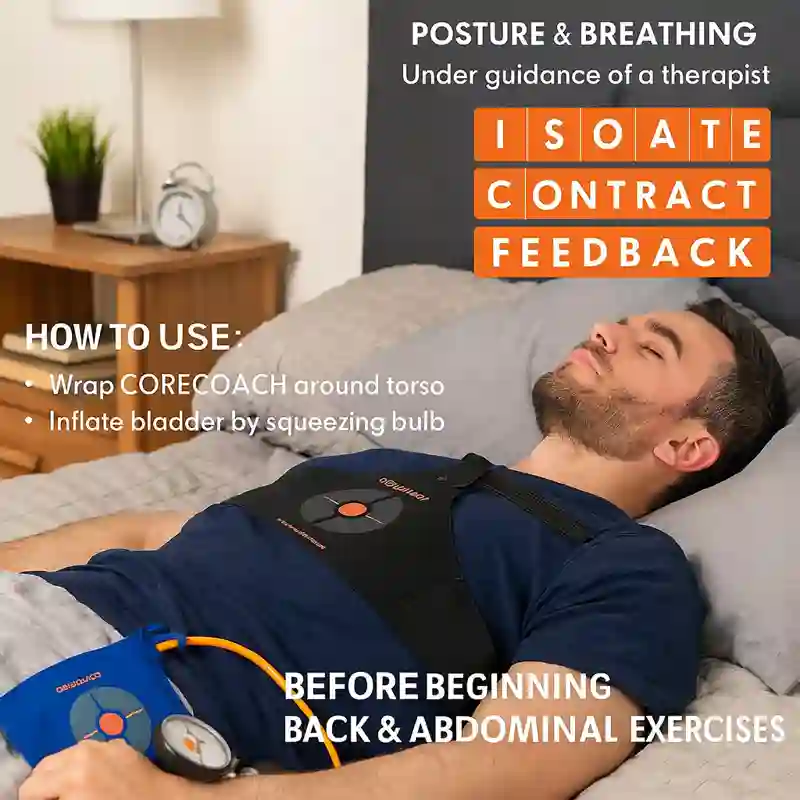
A strong, stable core is one of the most underrated factors in successful neurofeedback practice. When posture collapses during a session, breathing becomes shallow, which can limit focus and affect brainwave patterns. A pressure biofeedback device trains you to engage the right muscles for better spinal alignment, creating a more supportive base for sitting through training sessions comfortably.
The challenge many users face is not knowing whether they are activating the correct muscles. Without feedback, it’s easy to either underuse or overcompensate, which can make the problem worse. This device provides instant feedback by showing pressure changes in real time, teaching you how to stabilize your core effectively.
The outcome is improved posture, reduced back discomfort, and a stronger foundation for longer, distraction-free training. Over time, this can lead to deeper focus and more consistent neurofeedback results, since the body and brain are aligned and working together.
Pro tip: Use this tool for a few minutes before sitting for a session it primes your posture and improves breathing control.
Pros
-
Clear visual feedback for posture and core engagement.
-
Lightweight and portable.
-
Easy to set up and use at home.
Cons
-
Requires patience to see measurable results.
SleepO2 Wrist Recording Pulse Oximeter by EMAY
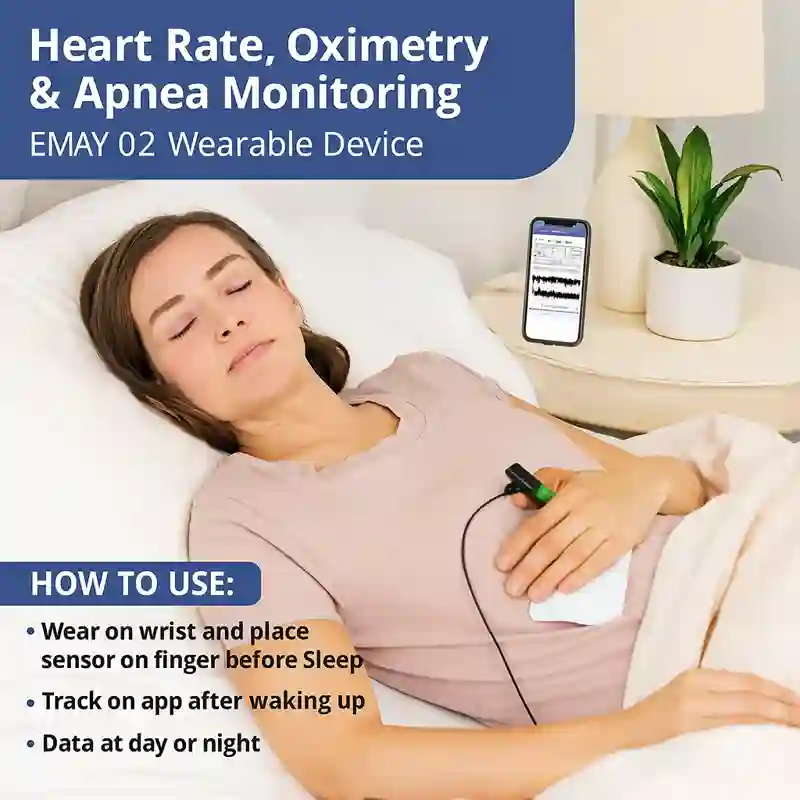
Sleep quality has a direct impact on how well neurofeedback training works. Poor sleep can lead to fatigue, slower brainwave regulation, and reduced focus during sessions. The SleepO2 Wrist Recording Pulse Oximeter is designed to track oxygen saturation and pulse rate throughout the night, helping you spot patterns that may affect your training performance the next day.
The main problem with traditional pulse oximeters is that they are uncomfortable for overnight use, often falling off or giving incomplete data. The SleepO2 solves this by using a lightweight wrist strap and soft finger sensor, allowing you to record hours of data without disruption. This makes it easy to see if nighttime oxygen dips are contributing to daytime fogginess or lack of concentration.
The result is a clearer understanding of how sleep impacts your neurofeedback progress. By addressing sleep issues such as undetected breathing disruptions you can approach each session well-rested and better prepared for brain training. Consistent use helps you make informed changes to your routine for improved focus and emotional regulation.
Pro tip: Review your overnight reports weekly and adjust bedtime habits, like screen use and caffeine timing, to improve results.
Pros
-
Continuous overnight monitoring of oxygen and pulse.
-
Comfortable wristband for sleep.
-
Easy-to-read results in the morning.
Cons
-
Slight delay in readings if worn too loosely.
Belifu Dual Channel TENS EMS Unit 24 Modes
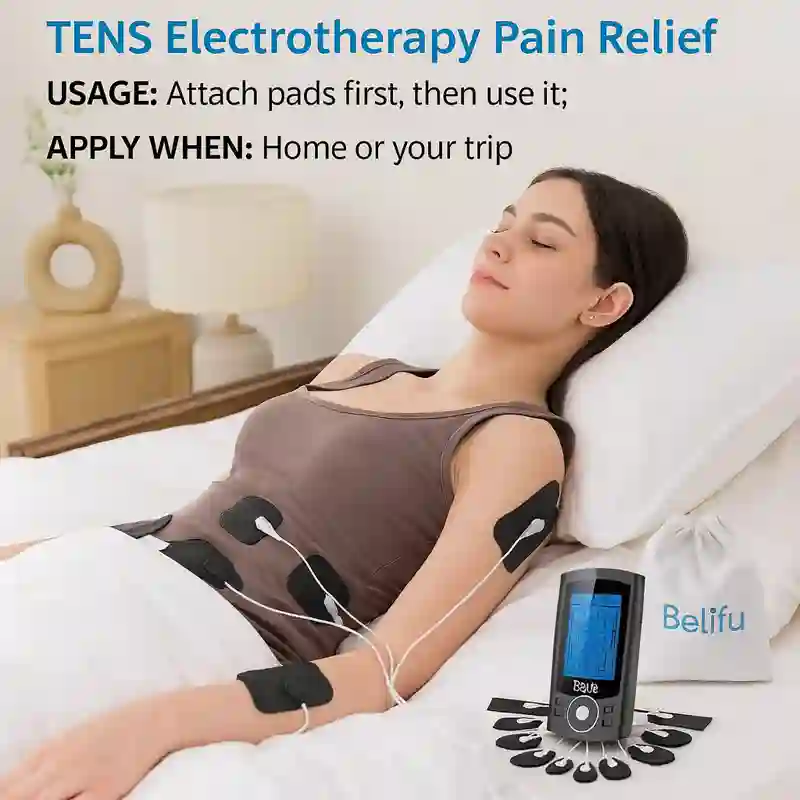
Consistency in neurofeedback training often requires a body that feels comfortable and free of pain. The Belifu Dual Channel TENS EMS Unit combines muscle stimulation and pain relief in a single device, allowing you to prepare physically before sitting down for brain training. This combination can make it easier to stay focused and reduce distractions caused by sore muscles or tension.
One of the common frustrations with pain management tools is limited customization. Belifu addresses this by offering 24 modes and adjustable intensity, so you can tailor sessions to your comfort level. Its dual-channel design means you can treat two areas of the body at once, which is ideal for people with both upper and lower body muscle tension.
Over time, using this device as part of your pre-session routine can create a sense of ritual signaling to your brain that it’s time to shift into training mode. This synergy between body and mind helps maximize the benefits of neurofeedback, allowing you to stay engaged for longer sessions without fatigue or discomfort.
Pro tip: Alternate between EMS (muscle stimulation) and TENS (pain relief) modes to both loosen tight muscles and reduce pain before a session.
Pros
-
Dual channel for multi-area treatment.
-
Multiple modes for personalized therapy.
-
Rechargeable and portable design.
Cons
-
Buttons can feel a bit small for larger fingers.
Sparthos Back Brace for Lower Back Pain
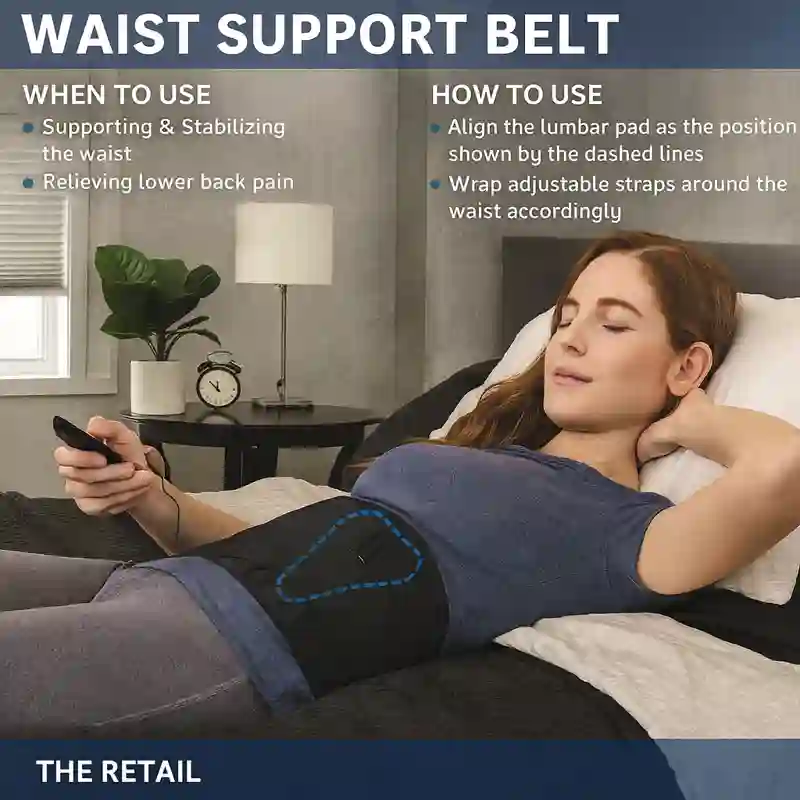
Lower back pain can make it difficult to sit for extended neurofeedback sessions. Discomfort leads to fidgeting, poor posture, and reduced focus. The Sparthos Back Brace is designed to provide firm yet comfortable support, allowing you to stay upright and relaxed for longer periods, which can dramatically improve session quality.
Many users struggle with finding the right balance between support and mobility. Some braces are too rigid and restrictive, while others don’t provide enough stability to make a real difference. Sparthos strikes the right balance with adjustable compression straps, breathable fabric, and lumbar support that stays in place even when you move.
With consistent use, this brace can reduce strain on the spine, improve sitting posture, and decrease fatigue during training. This gives your brain more energy to focus on learning rather than processing pain, creating a better environment for effective neurofeedback.
Pro tip: Wear the brace for the first half of your session, then remove it if you want to practice maintaining posture without assistance.
Pros
-
Helps with posture.
-
Light and easy to wear.
-
Good for work or play.
Cons
-
Can feel tight if not adjusted right.
Upright GO 2 Premium | Posture Corrector Trainer
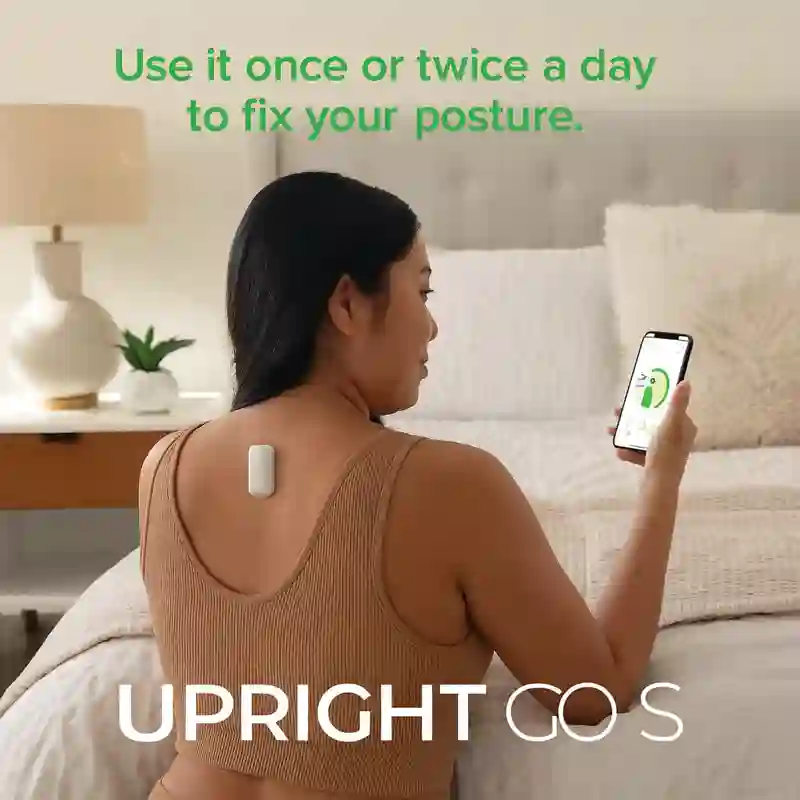
Good posture is critical for effective neurofeedback because it supports steady breathing and helps the brain remain alert. The Upright GO 2 is a smart posture trainer that attaches to your upper back and gently vibrates when you start to slouch. This instant feedback trains you to sit taller and maintain a healthier posture, which can improve concentration during sessions.
The problem many people face is being unaware of their posture until pain or fatigue sets in. By that time, tension has already disrupted focus. Upright GO 2 solves this by offering real-time alerts and a companion app that tracks progress over time. This transforms posture training into a measurable habit that fits neatly into a daily neurofeedback routine.
Regular use of Upright GO 2 not only reduces discomfort but also builds long-term muscle memory for proper alignment. Over time, you may find that you no longer need reminders good posture becomes second nature, creating an ideal physical state for brain training.
Pro tip: Start with short vibration intervals and gradually extend training time to build endurance without overcorrecting.
Pros
-
Portable and convenient for on-the-go use.
-
Adjustable settings for personalized relief.
-
Promotes performance improvement through muscle stimulation.
Cons
-
Results may take time.
TENS 7000 Digital TENS Unit with Accessories

Chronic pain can be one of the biggest obstacles to maintaining a consistent neurofeedback routine. The TENS 7000 Digital TENS Unit is a professional-grade solution that uses electrical impulses to block pain signals, helping you feel more comfortable and focused during training sessions. Its clinical reliability has made it a favorite among physical therapists and home users alike.
The challenge many people face is finding a pain relief solution that is both powerful and cost-effective. Cheaper devices may lack intensity, while more expensive options can feel unnecessarily complicated. The TENS 7000 strikes a balance by offering medical-grade output, multiple modes, and an easy-to-use interface, making it accessible even for first-time users.
With regular use, this device can become a key part of your pre-training routine, loosening tense muscles and reducing discomfort so you can sit still and concentrate. Over time, this consistency can improve the quality of neurofeedback results, as sessions are no longer cut short due to physical pain.
2Pro tip: Keep extra electrode pads on hand so you can use the unit daily without interruption to your routine.
Pros
-
Strong, deep relief.
-
Many control options.
-
Comes with extras.
Cons
-
A bit large to travel with.
Safety, Training & Best Practices
Safety is one of the most important considerations when working with any neurofeedback device at home. Look for systems that are FDA-cleared or supported by published clinical research. This ensures the technology has been reviewed for both safety and effectiveness. It’s also smart to read through manufacturer guidelines carefully before starting. Following recommended session times and electrode placements helps prevent overuse and keeps training safe.
It’s equally important to set realistic expectations. Neurofeedback is a process progress usually happens gradually as the brain learns to self-regulate over time. Consistency matters more than intensity, so aim for shorter, regular sessions instead of occasional long marathons. Many professionals recommend pairing neurofeedback with supportive habits like good sleep hygiene, proper hydration, and a comfortable training environment to amplify results.
A well-optimized space enhances neurofeedback results. Use a quiet room with minimal interruptions, supportive seating, and good lighting to encourage focus. A dedicated practice area trains the brain to associate the environment with calm and concentration. Over time, this ritual strengthens mental conditioning, just like going to a gym primes the body for exercise.
Frequently Asked Questions
Are home neurofeedback devices safe?
Yes. A neurofeedback device for home use is non-invasive and typically FDA-cleared. Follow instructions and session limits for safe results.
How long does it take to see results?
Some notice changes in focus or sleep within weeks. Consistent use of the best home neurofeedback device gives stronger, lasting improvements.
Do I need a doctor’s supervision?
Not usually. A neurofeedback machine for home use is designed for independent training, though consulting a doctor is wise if you have health concerns.
What’s the difference between neurofeedback and biofeedback?
Biofeedback tracks body signals like heart rate. Neurofeedback measures brainwaves and trains your mind to stay in balanced states.
Can neurofeedback help with sleep, anxiety, or focus?
Yes. Regular use can improve focus, calm anxious thoughts, and support deeper sleep. Pairing with tools like Apollo Neuro Wearable may boost results.
Which neurofeedback device is best for home?

Setting up the TENS 7000 was straightforward. I connected the wires, attached electrodes to my sore back, and selected the desired program. The electrical pulses delivered immediate relief and helped relax stiff muscles.
Final Thoughts: Your Brain, Your Data, Your Future
Home neurofeedback is no longer a niche therapy reserved for clinics it’s now a practical option for anyone serious about improving focus, emotional balance, and mental performance. The technology has matured enough to be safe, user-friendly, and effective, even for first-time users. By choosing a device that fits your needs and using it consistently, you can take control of your cognitive health and see meaningful progress over time.
Think of neurofeedback as an investment in long-term resilience. The more you practice, the more your brain learns to regulate itself just like building strength at the gym. Whether your goal is stress reduction, better sleep, or peak productivity, these devices give you tools to support those outcomes without relying on medications or endless trial and error.
If you’re ready to get started, the Apollo Neuro Wearable remains the most versatile choice for most users. It’s simple to set up, backed by research, and comfortable enough to use daily.
Your Path to Better Focus: Best Home Neurofeedback Device Reviews by Homesdevice
Homesdevice believes environment shapes thinking, work, and recovery. Like selecting the best home neurofeedback device, choosing the right tools can improve focus, reduce stress, and enhance daily life. Since 2022, Homesdevice has guided homeowners, contractors, and managers toward reliable, code-compliant products that create safe, functional spaces for better living, better work, and long-term performance.
Our curated selection of floor boxes, power delivery systems, and home products is designed for projects where safety, performance, and cost-efficiency matter most. Every order is backed by our fast shipping promise and our 110% low price guarantee. We are proud to be the trusted source professionals turn to when building or upgrading home infrastructure.
If you are ready to create a space that supports better focus, better sleep, and better daily living, explore our product catalog at Homesdevice. And if you ever need help choosing the right solution, reach out our knowledgeable team is here to guide you every step of the way.
As an Amazon Associate I earn from qualifying purchases.